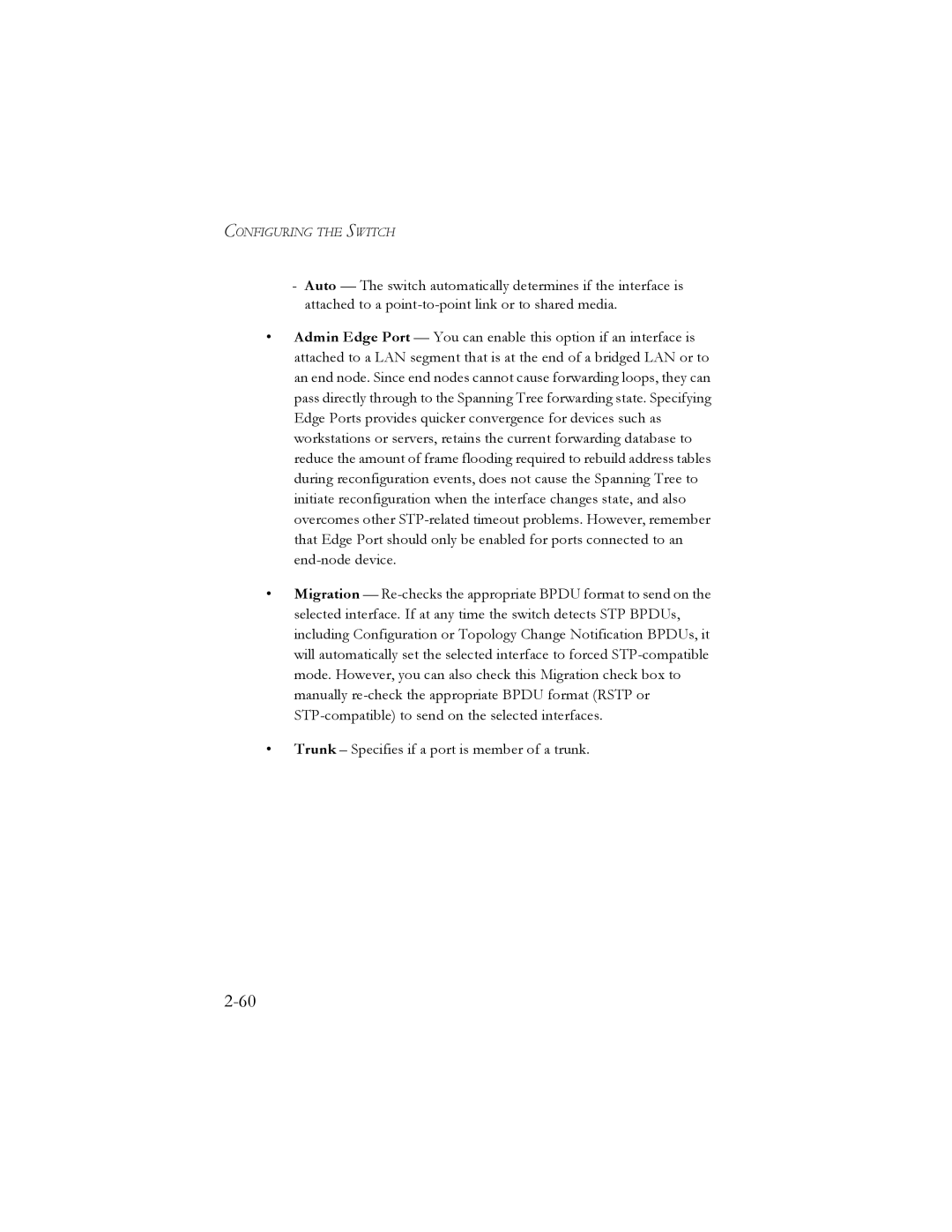CONFIGURING THE SWITCH
-Auto — The switch automatically determines if the interface is attached to a
•Admin Edge Port — You can enable this option if an interface is attached to a LAN segment that is at the end of a bridged LAN or to an end node. Since end nodes cannot cause forwarding loops, they can pass directly through to the Spanning Tree forwarding state. Specifying Edge Ports provides quicker convergence for devices such as workstations or servers, retains the current forwarding database to reduce the amount of frame flooding required to rebuild address tables during reconfiguration events, does not cause the Spanning Tree to initiate reconfiguration when the interface changes state, and also overcomes other
•Migration —
•Trunk – Specifies if a port is member of a trunk.
